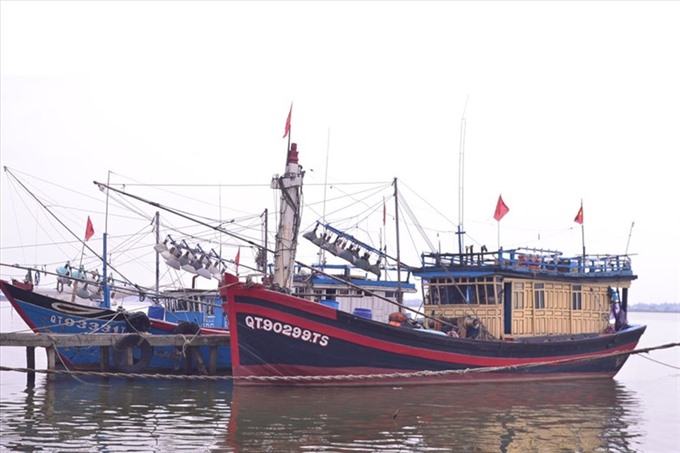 Society
Society

Fishing season has started in the central province of Quảng Trị but many ships are on the shore because ship owners cannot find workers.
 |
| Several fishing vessels with high capacity remain on shore due to the lack of labour force. - Photo laodong.vn |
QUẢNG TRỊ — Fishing season has started in the central province of Quảng Trị, but many ships remain ashore due to a lack of willing seamen.
The Lao Động (Labourer) newspaper reported that several fishing vessels with high capacity in Gio Linh District’s Cửa Việt Township have stayed at port for days because ship owners can’t find labourers.
Nguyễn Văn Năng, 55, a local ship owner, said his ship had stayed at port for nearly a week already and he did not know when he could set sail.
“I just upgraded my vessel to total main engine capacity to 400CV under Government Decree 67 to fish from about 200 nautical miles offshore. I could earn about VNĐ40 million (US$1,800) per catch after paying wages and other costs,” he said.
“I took out a loan for shipbuilding, but now the ship is ashore because I can’t find workers. How can I pay my loans back?” Năng said.
He needs at least 12-14 workers for the vessel for each trip. Last catch, he hired only eight people.
"Previously, I only worried about not having a big and good vessel, but now it is difficult to employ workers,” said Năng.
Anchoring the ship for several months in winter because of a lack of seamen, Phan Thanh Đạo, from Vĩnh Linh District’s Cửa Tùng Township has to switch to other jobs to repay his loans.
In line with the Government’s Decree 67, Đạo built a wooden ship with a cost of VNĐ11 billion (VNĐ7 billion from loans).
In use from May 2016, so far he has only paid nearly VNĐ500 million and his vessel had to be ashore for nearly six months due to a lack of workers.
Doubling down, he borrowed another VNĐ1.3 billion to buy tools for cuttlefish fishing which requires fewer labourers.
“Catching cuttlefish requires about eight workers instead of 14 for fishing offshore. But it is also hard to find labourers even if I offer a good salary,” said Đạo.
Many ship owners have to hire old labourers.
Hồ Văn Anh, 54, from Cửa Việt Township, said he had 11 employees, the youngest at 45 years old and the oldest at 62 years old.
"Here, marine workers at my age are still very common,” he said.
From the beginning of this year, he has only gone offshore three times and earned enough money to pay for every cost, without any interest because his workers are old, Anh said.
Anh began working at sea when he was 28 but he has never faced a shortage of seamen like now.
Hồ Văn Hân, one of Anh’s old fishermen said they were old and not strong enough to go to sea as before. But they felt sorry for the ship owner so they went fishing.
“We look forward to having young people to continue our job so we can rest,” Hân said.
Few vessels have young labourers.
Bùi Đình Chiến, 44, living in Cửa Việt Township, has six employees. One of them is his son who is 25 years old.
Chiến is considered a lucky man who has a young worker. But he said: “I try to share fishing experience with my son. But he told me that he wants to work abroad to earn more money.”
Chiến’s son is one of few young people at home because most local young men go abroad to find work.
Chairman of Gio Linh District People’s Committee, Trần Văn Quảng, said the average age of local fishermen was from 45-50 years.
"There are few young people fishing. They are educated and professionally trained so they want to find jobs abroad while the marine workers are now old,” he said.
There are more than 1,890 young people from the area working abroad, mainly from four coastal communes of Cửa Việt, Gio Việt, Gio Hải and Trung Giang.
Asked about young workers who don’t want to fish offshore, Quảng said, authorities needed to review the situation to adjust programmes of upgrading or building ships to ensure efficiency.
The province now has more than 2,300 fishing vessels but there are no official figures on the number of ships lacking of workers. — VNS




